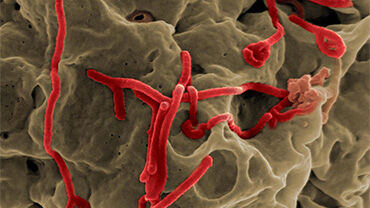Ebola outbreak in Democratic Republic of the Congo: the risk of introduction to the EU remains very low
Ebola cases in urban areas in the Equateur province in DRC increase the risk of spread to neighbouring countries, the risk of introduction to the EU is very low, states ECDC risk assessment published today.
49 cases and 26 deaths have been recorded in the Equator province in DRC, from 4 April until 20 May 2018. Four confirmed deaths from the Ebola virus were reported in urban areas in the Equateur province in DRC – in the city of Mbandaka, with a population of 1.2 million.
The outbreak is not unexpected, since it is in a recognised area of Ebola virus circulation. However, the spread to urban areas and the proximity of the Congo River (a major travel and trade route) could increase the probability of spread to other provinces of DRC and neighbouring countries (e.g. Republic of the Congo and the Central African Republic).
Although there is a risk of local and regional spread of the virus, the risk of global spread is limited.
The Ebola virus is transmitted from person to person only through direct contact with bodily fluids of an infected person/animal, and at this stage, the magnitude of the outbreak is limited in regard to the number of cases, geographical spread, and distribution in remote areas.
ECDC has updated its risk assessment on the Ebola outbreak:
- The risk of introduction and spread to the EU is currently considered very low.
- Very low risk for EU travellers/residents in DRC areas not known to have cases.
- There is a low risk for travellers entering the affected area (the Equateur province).
Travellers to affected areas should follow safety precautions, such as avoiding contact with symptomatic patients and their bodily fluids, washing hands regularly, avoiding unsafe sex, avoiding habitats populated by bats (for the comprehensive list of measures please see the rapid risk assessment).
WHO has approved the use of an experimental vaccine during the current outbreak, for ‘ring vaccination’, i.e. vaccinating high-risk populations: contacts/contacts of contacts of confirmed cases, as well as frontline responders and healthcare workers.
Risk assessment
Rapid risk assessment: Ebola virus disease outbreak in Equateur Province, Democratic Republic of the Congo, First update
From 4 April until 20 May 2018, 49 cases and 26 deaths have been recorded: of which 22 are confirmed, 21 are probable and six are suspected cases.






